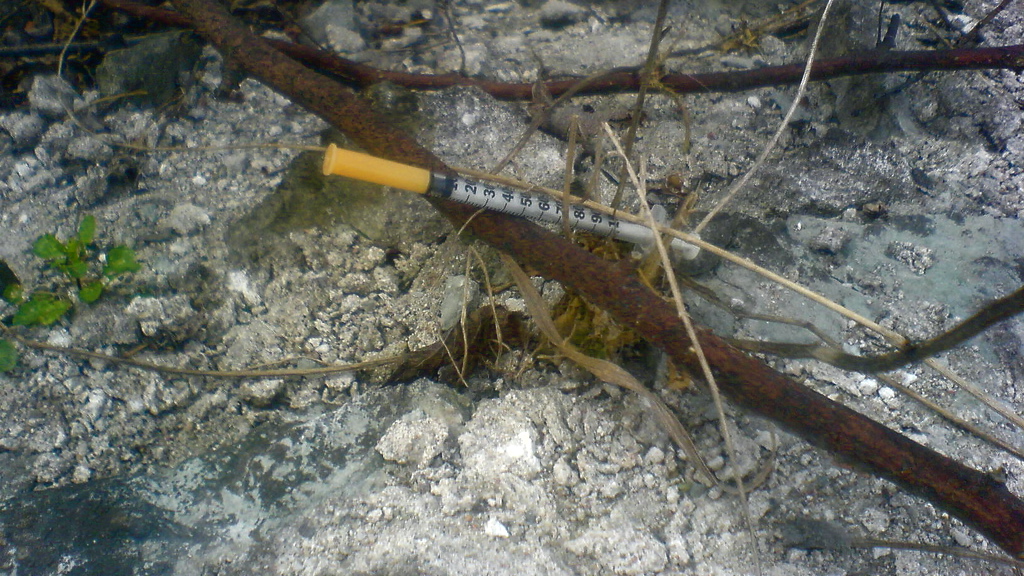
A hypodermic needle left on the ground by a heroin user in Tallinn. The AIDS Prevention Center says the main source of the epidemic is heroin users sharing hypodermic needles. Photo by Carl-Johan Sveningsson.
TALLINN — Estonia has the highest percentage of HIV/AIDS infection in the European Union, and the increasing number of cases is forcing the cash-strapped government to spend more on expensive medication.
Estonian government announced Thursday that it is dedicating 12.9 million krooni (€824,458) from its reserve funds to the Ministry of Social Affairs to purchase HIV/AIDS medications. The number of patients is estimated to increase by at least 200 people over the remainder of the year.
“If there were nearly 200 infected during the first half of the year then during the second half … another 200 infected might be found,” Nelli Kalikova, deputy director of the AIDS Prevention Center said.
The Ministry of Social Affairs currently has 67.1 million krooni (€4.3 million) in funding to treat 1,758 patients. However, according to Global Health Facts organization, in 2007-2008 Estonia had 9,900 people living with HIV/AIDS and the number is growing each year. According to Estonian Health Board, already 201 infected people were discovered this year. More than 7,000 new cases were found since the HIV/AIDS epidemic began in August 2000.
According to the Estonian nongovernmental organization AIDS Prevention Center, the main source of the epidemic were heroin users sharing hypodermic needles — its estimated that half of the roughly 13,000 regular heroin users are infected with HIV/AIDS.
“The epidemic started off in Narva, caused by a difficult economic situation, high unemployment rate and a large number of injecting drug users after an HIV/AIDS outbreak in Saint Petersburg in in 1999-2000,” reads the prevention center’s website.
Since then the disease has been slowly but steadily spread across Estonia by sex, the majority of whom are under age 25.
“Many HIV carriers do not know that they are infected as it may take four to five years or even more time until their health will get worse,” Kristi Rüütel, an expert of National Institute of Health Development said.
This article is free to view. To read Baltic Reports’ subscription-only articles, click here.












